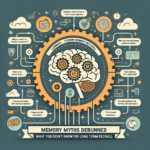
Introduction
In a world where technology drives business outcomes, the ability to seamlessly integrate new systems is more crucial than ever. As organizations adapt to rapid changes in the tech landscape, the phrase "From Concept to Execution: Steps for Seamless Technology Integration in Organizations" becomes a vital focal point. Successfully bridging the gap between envisioning a technological future and executing it can mean the difference between thriving and merely surviving.
Imagine a ship sailing toward uncharted waters. Without a strong plan and the right technologies at their disposal, even the best crew would struggle to navigate. Similarly, businesses must embrace a clear roadmap that guides them from innovative ideas to operational realities.
This article dives deep into the essential steps for technology integration, where we will explore proven methodologies, real-life case studies, and actionable insights to help organizations harness technology effectively.
Understanding Technology Integration
Before we delve into the steps of seamless technology integration, it’s essential to understand what technology integration means. At its core, technology integration refers to the process of deploying new technologies within an organization in a way that enhances performance and connectivity across various functions.
Importance of Technology Integration
- Efficiency: Seamless technology integration minimizes redundancy and streamlines operations.
- Scalability: Organizations can adjust to changing market demands more readily.
- Enhanced Collaboration: Integrated technologies foster teamwork and communication among departments.
- Data-Driven Decisions: With technology in sync, organizations gain access to real-time data that can inform strategic decisions.
Step-by-Step Guide to Seamless Technology Integration
1. Identify Core Objectives
The first step in our journey from concept to execution is identifying core objectives. This is not merely about technology; it’s about aligning technology initiatives with business objectives.
Key Questions to Consider:
- What business problems are we trying to solve?
- How will this technology improve operational efficiency?
- What specific outcomes do we anticipate?
2. Conduct a Gap Analysis
Once objectives are clear, the next step is a gap analysis. This involves assessing current capabilities versus desired outcomes to identify what new technologies or processes are needed.
Tools for Gap Analysis:
| Tool | Purpose |
|---|---|
| SWOT Analysis | Identify strengths and weaknesses |
| BPMN Diagrams | Map out business processes |
| PESTLE Analysis | Evaluate external factors |
3. Engage Stakeholders
No technology integration initiative can succeed without buy-in from stakeholders. This includes employees, customers, and even suppliers.
Strategies for Engagement:
- Conduct workshops to gather inputs.
- Organize Q&A sessions to address concerns.
- Create cross-departmental committees to foster collaboration.
4. Select the Right Technology
Having identified objectives, conducted a gap analysis, and engaged stakeholders, it’s time to select the right technology solutions. This should involve a careful assessment of vendors, service providers, and technology options that align with the organization’s goals.
Criteria for Selection:
- Compatibility with existing infrastructure.
- Cost-effectiveness and ROI.
- Scalability features for future growth.
5. Develop an Implementation Plan
A comprehensive implementation plan is critical for success. This roadmap should outline timelines, responsibilities, and resources needed for seamless technology integration.
Implementation Plan Components
| Element | Details |
|---|---|
| Timeline | Phase-wise breakdown |
| Resources | Budget, human, and technical |
| Responsibilities | Assigned roles across teams |
6. Training and Change Management
Equipping your workforce with the necessary skills to use new technologies effectively is critical. Change management processes must be established to ensure smooth adaptation.
Training Strategies:
- Develop customized training programs.
- Implement mentorship systems where experienced employees guide others.
- Regularly update training based on feedback and technological changes.
7. Monitor and Evaluate
After executing the integration, it is vital to monitor outcomes and evaluate performance against the set objectives. Use Key Performance Indicators (KPIs) to assess the effectiveness of the integration.
Recommended KPIs:
| KPI | Purpose |
|---|---|
| User Adoption Rates | Measures how efficiently employees have adapted |
| ROI | Evaluates financial returns from technology investments |
| System Downtime | Assesses reliability of newly integrated technology |
8. Iterate and Optimize
The journey from concept to execution doesn’t end with integration. Continuous improvement should be part of the organizational culture. Solicit feedback from users and stakeholders to identify what works and what doesn’t, allowing for iterative changes and upgrades.
Case Studies in Technology Integration
Case Study 1: Microsoft’s Shift to Cloud
Microsoft’s transition to a cloud-first strategy is a prime example of effective technology integration. By shifting its core offerings to the Azure cloud platform, Microsoft not only streamlined operations but also enhanced scalability and collaboration.
Analysis: Microsoft’s approach centered around clear objectives, engaging stakeholders (including customers), and iterative execution. The integration of diverse cloud services positioned them as a leader in the tech industry.
Case Study 2: Starbucks’ Mobile App Revolution
Starbucks effectively leveraged technology to transform customer experiences through its mobile app. The introduction of mobile ordering and rewards systems integrated seamlessly with their existing operational structure.
Analysis: This integration met clear customer needs, enhanced service efficiency, and fostered customer loyalty. Starbucks monitored performance through KPIs like app usage and customer feedback to continuously refine their offerings.
Case Study 3: GE’s Digital Transformation
General Electric (GE) embarked on a digital transformation journey focusing on integrating IoT technologies to improve operational efficiency across its manufacturing plants.
Analysis: The comprehensive implementation plan involved training workers on new tools and close collaboration with various departments to monitor performance and iterate strategies effectively.
Conclusion
The pathway from concept to execution: steps for seamless technology integration in organizations is a carefully orchestrated journey. By following a structured approach — from identifying core objectives to monitoring outcomes — organizations can leverage technology to drive innovation and growth.
Investing time and resources into each of these steps will pay dividends, making organizations agile and responsive to the ever-evolving market. For leaders and decision-makers, the takeaway is clear: embracing technology adoption with a strategic and inclusive mindset will position your organization for long-term success.
FAQs
1. What is technology integration?
Answer: Technology integration refers to the process of harmonizing various technology systems within an organization to improve overall efficiency, communication, and data flow.
2. How can I measure the successful integration of technology?
Answer: Success can be measured using KPIs such as user adoption rates, ROI, and system downtime to assess how well the new technology meets organizational objectives.
3. What are common pitfalls in technology integration?
Answer: Common pitfalls include inadequate planning, poor stakeholder engagement, lack of training, and insufficient monitoring of progress.
4. How can change management aid in technology integration?
Answer: Change management helps ensure that employees are prepared for new technologies through training and support, leading to higher adoption rates and lower resistance.
5. Is a one-size-fits-all approach effective for technology integration?
Answer: No, each organization has unique needs and challenges. Customization of the integration strategy is critical for achieving optimal results.
By understanding and applying these essential steps, organizations can not only navigate the challenges of technology integration but also unlock new opportunities for growth and innovation. So take the first step today: map out your journey from concept to execution, and watch as technology transforms your business landscape.

















